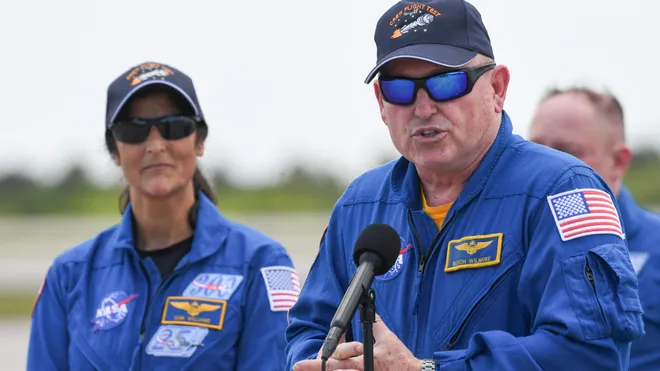Due to problems with Boeing’s Starliner spacecraft, two astronauts who departed Earth in June are still stationed at the International Space Station.
According to NASA, if the Boeing Starliner that two US astronauts launched into space for an eight-day trip in June cannot be fixed so they can come home, they might be forced to stay on the International Space Station until the following year.
NASA announced on Wednesday that astronauts Butch Wilmore and Suni Williams, who piloted Boeing’s Starliner capsule as the first crew, would make a comeback on SpaceX’s Crew Dragon in February 2025, should Starliner’s return to Earth continue to be ruled risky.

While NASA and Boeing figure out how to get the astronauts home, the US space agency has been talking with SpaceX about possible arrangements to leave two seats unoccupied on a future Crew Dragon flight, which was itself postponed by a month on Tuesday.
Issues with Starliner’s propulsion system have prolonged the astronauts’ test mission, which was originally scheduled to spend around eight days on the station. These concerns have raised doubts about the spacecraft’s capacity to safely return the men to Earth on schedule.
According to a Boeing representative, the business “will take the necessary steps to configure Starliner for an uncrewed return” should NASA decide to alter the aircraft’s mission.
Boeing, which has been struggling for years to compete with SpaceX and its more experienced Crew Dragon, would suffer a serious setback if astronauts who it had intended to send back on Starliner were instead brought back on a SpaceX vehicle.
Starliner is currently docked at the same port that Crew Dragon will need to use to convey the incoming astronaut crew to the International Space Station (ISS), having spent 63 of its 90-day maximum stay there.
The SpaceX Crew-9 launch was initially scheduled for mid-August. Nasa now says the mission will launch after 24 September.
Boeing said in July that after rigorous ground tests, engineers pinpointed issues within the Starliner, including the abrupt malfunction of thrusters and helium leaks.
In a 2 August statement, the company said its “confidence remains high in Starliner’s return with crew”.
Recent reports had suggested there was more conflict behind the scenes between Nasa and Boeing leaders. Some of the agency’s leaders had appeared to question whether the Starliner should bring Williams and Wilmore back.
A meeting this week of Nasa’s Commercial Crew Program, which oversees Starliner, ended with some officials disagreeing with a plan to accept Boeing’s testing data and use Starliner to bring the astronauts home, officials said during the news conference on Wednesday.
“We didn’t poll in a way that led to a conclusion,” Commercial Crew Program chief Steve Stich said.
“We heard from a lot of folks that had concerns, and the decision was not clear,” Ken Bowersox, Nasa’s space operations chief, added.
A Boeing executive was not at the Wednesday press conference.
Space experts told the Guardian it was not unusual or unexpected for an experimental spaceflight to develop issues.
“It’s defined as a test mission, it’s called a crewed test flight, and one of its things is to deal with unplanned issues,” said Jerry Stone, senior associate of the Space Studies Institute and author of One Small Step.
But the stakes are high for Boeing, which has been battling a PR crisis for the last few years over its aircraft.
At the company’s last press conference about the Starliner, Mark Nappi, Boeing’s commercial crew program manager, said he regretted being so “emphatic” about how the mission would last only eight days.
Nappi expressed remorse, saying, “I wish we had just decided to stay up there and work on everything we wanted to do.”
According to Boeing’s testing thus far, four of Starliner’s aircraft failed in June due to overheating and self-destructing, and other thrusters that refired during tests showed weaker-than-usual performance due to a propellant constraint.
